This post is also available in: ![]() English
English ![]() Français (French)
Français (French)
Introduction
The vast majority of grapevines are grown in open fields throughout the world, more particularly in France, Italy, Spain, China, the United States and Turkey, the main producing countries (source, 2028). In fact, five countries represent 50% of the world vineyard.
Most grape varieties are vines found in temperate or Mediterranean climates.

Nowadays, the consequences of global warming are increasingly felt. As a result, there is pressure on farmers around the world to protect grape varieties and keep quality and yields constant.
Important temperature variations are affecting the hydrological cycle, precipitation patterns, frequency and duration becoming increasingly variable. This will have repercussions on the water supply to the vineyards. In some parts of southern Europe the situation is already critical with repeated heat waves and droughts… An increase in incident radiation, and in particular its UV-B component, was also observed by experts.
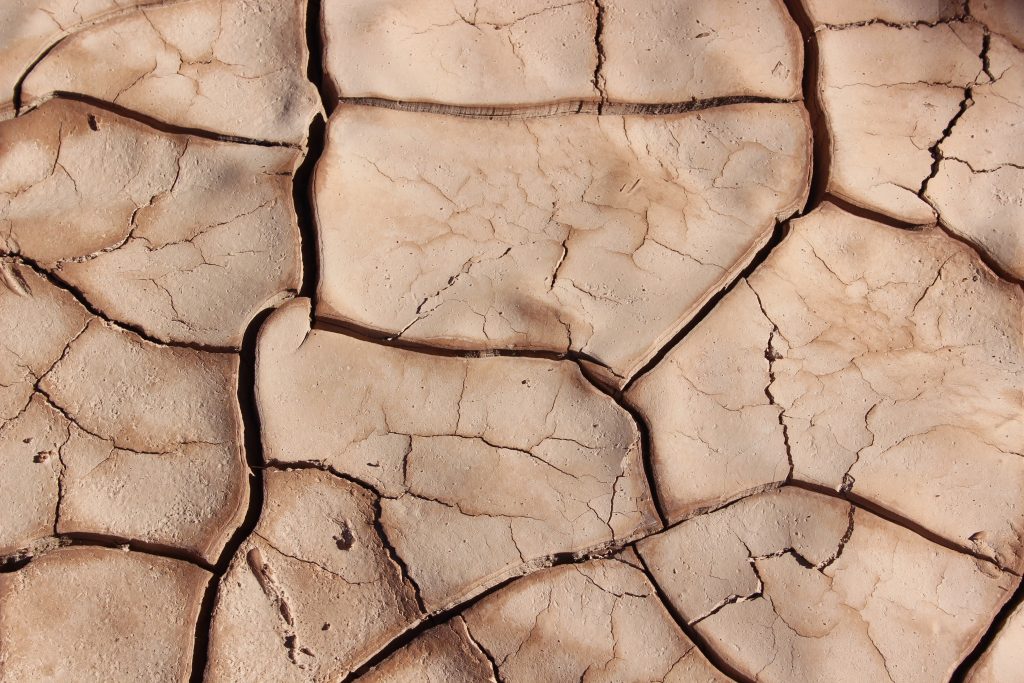
These changes affect the development of the plant and ultimately the qualities of the wine for the final consumers.
Another trend is also observed with new countries active in wine production. We will see in this article the case of the cultivation of certain grape varieties grown in greenhouses in North America in Quebec, Canada. In these northern regions, extreme cold in winter and high humidity in summer are the main constraints.
The current evolution of climate changes and the cultivation of grapes in new territories leads to the following reflection: ” Can we grow grapes under a protected environment? “
Impact of climatic conditions on wine quality
The final quality of the wine is dependent on several factors. We can talk about the grape variety, the type of soil, the growing technique but also the climatic conditions. The last one is a very important factor…
Indeed, the concentrations of aromas and sugars as well as the aromas of the wine will be greatly linked to the climate as shown in the diagram below:

Periods of high temperature and humidity will be harmful to crops as well as periods of intense cold. The increase in severity and frequency of these extreme episodes will be very negative and will affect the health of the vineyard and the quality of the wine.
Indeed, for example, water stress, sudden changes in temperature or frost, impact the balance between sugar and acidity of the grapes, which affects the palette of aromas. For example, a white wine, once lively and delicate, could become more floral and fat. And a red wine, once tannic, could become fruity and aromatic.
Moreover, climate change will also have an influence on wine grapes pests and diseases. High temperatures coupled with humidity will increase the risk of fungal attacks. In addition, plants that are more vulnerable during these periods will be more fragile and susceptible to disease. Some pests not present in certain areas will also migrate and be potential vectors of viruses on crops.
Growing grape wines in a protected environment ?
The previous observations lead us to believe that a profound change in the viticulture industry will have to be done in the short term.
One of the solutions is to replace the current varieties (or “cépages”) with varieties that are more resistant to hot weather conditions. It can be part of the solution, however, this option has its limits.
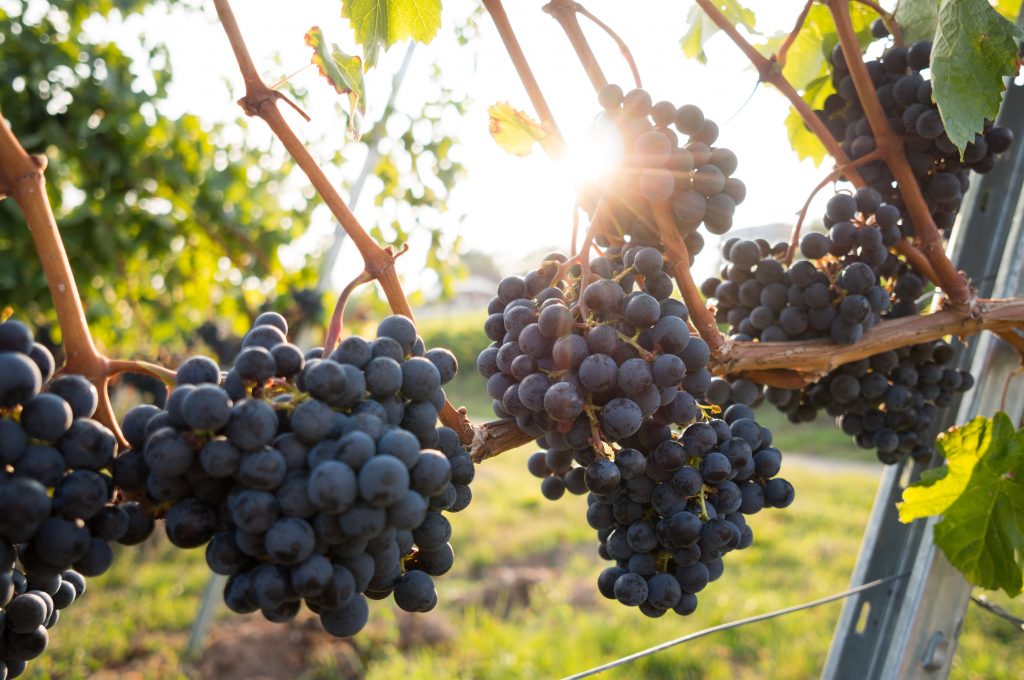
According to some specialists, one of the main problems is the lack of water that will most impact the vineyards. Tomorrow’s viticulture must therefore anticipate these phenomena and adapt to climate change.
The protection of crops with shelters such as shade houses or plastic greenhouses (low-tech) can be a solution to limit the impacts of the external environment. In addition to protecting fruits from pests and predators such as birds, these structures could have systems to collect water and then use it to irrigate grape plants.
However, the disadvantages will be the initial investment and the maintenance of the structures and covers, but it could allow to keep a high level of production without altering the final quality of the wine. This could represent significant savings for the producers.
Another limitation would be that having such shelters in humid regions could favor the development of fungal diseases such as powdery mildew which develops in warm and humid environments. Indeed, the “greenhouse effect” in the growing area will increase the temperature and the humidity will also rise when the plants will transpire.
However, one of the solutions would be to have higher structures with large mesh nets (insect-proof netting) and active ventilation (air mixing) in the greenhouse.
Example : grapes wine cultivation in greenhouse in Québec, Canada
In the Quebec province, it is not possible to cultivate certain noble grape varieties (or “cépages”) because of the long and cold winters. In reality, temperatures can drop to -40 degrees Celsius (or -40 degrees fahrenheit) and can be negative for half the year.
In order to cope with these extreme conditions and to produce top quality wine in accordance with European standards, some producers grow their grapes under greenhouses. The objective is to reproduce conditions close to the Mediterranean climate for vines imported from southern Europe.
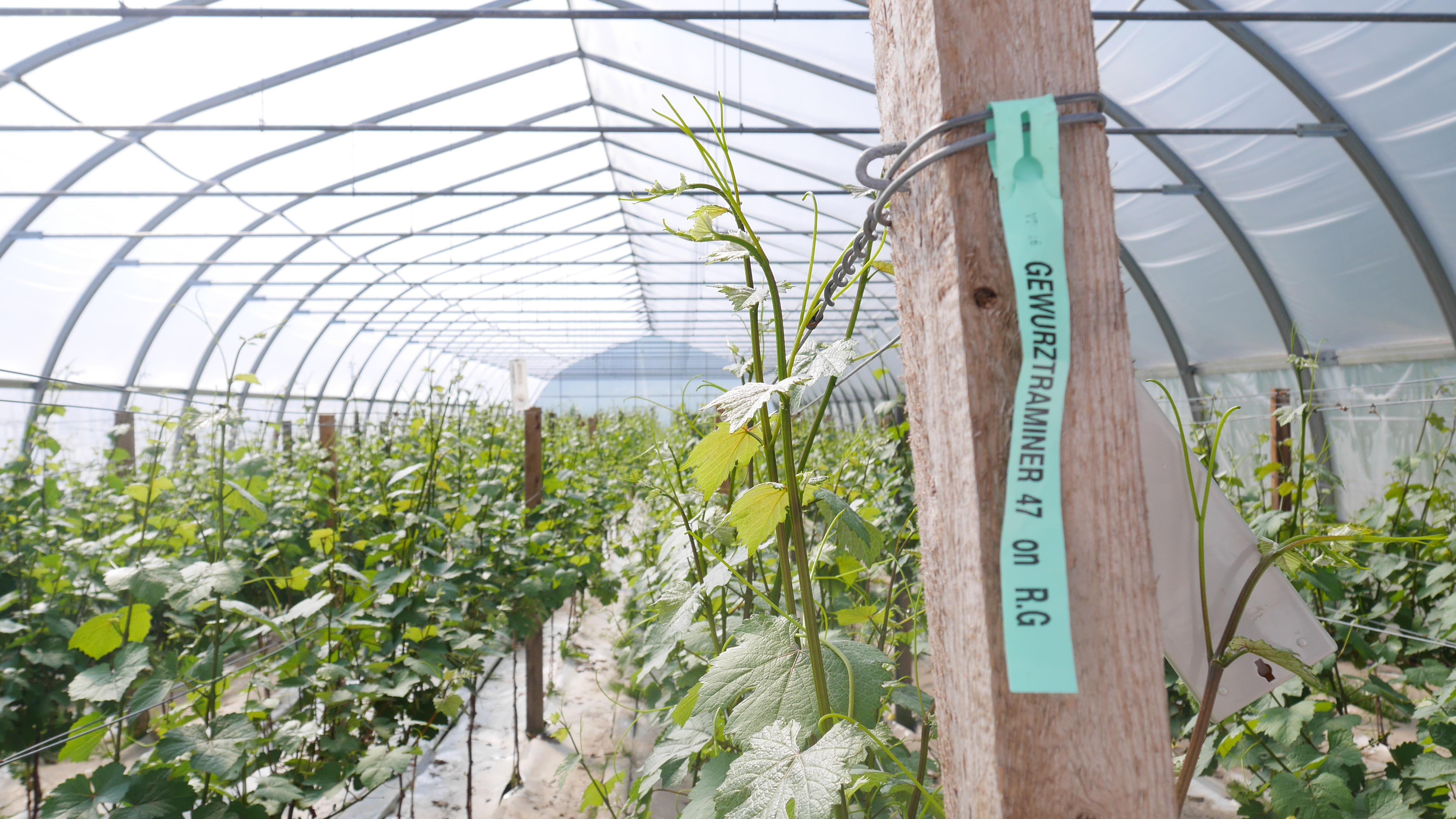
In the example above, the greenhouses are heated in winter with biomass to maintain positive temperatures. A ferti-irrigation system feeds the plants. We can noticed that the greenhouses (model = Ovaltech) are ventilated passively with a lateral rolling system protected with anti-insect net. Cabernet Sauvignon, Merlot, Pinot Gris, Riesling and Gewurztraminer are grown in these individual greenhouses.
” One of the main challenges is to reach the number of degree days to ripen the red grapes sufficiently and to obtain the necessary sugar level to be able to make qualitative wines. “
One of the big questions remains the profitability of this model knowing that the young vines will hang three years before being able to produce grapes.
Conclusion
Climate change is a major challenge for the world’s wine industry in the years to come.
Even if the current situation in 2021 can be positive for some winegrowers, they will have to anticipate the gross variations of the climate in the near future to keep their production and quality standards. We have seen that the organoleptic qualities will evolve if the climate changes, so the attractions of certain geographical areas will migrate further north.
Using irrigation systems and greenhouses to produce wine may seem extreme today but it may be part of the solution tomorrow… Some producers in America and Europe are already experimenting with these new techniques.
Other low-cost solutions exist such as protecting crops with geotextile in winter or keeping a plant cover to limit soil erosion combined with the use of “mulch” at the foot of shrubs.There is also sprinkler irrigation to protect against spring frosts.
Sources:
2019 Statistical report on world vitiviniculture:
https://www.oiv.int/public/medias/6782/oiv-2019-statistical-report-on-world-vitiviniculture.pdf
Caractéristiques agronomiques des cépages cultivés au Québec et résumé de l’état des connaissances sur la protection contre le gel (Agri-Réseau):
https://www.agrireseau.net/documents/102225/caracteristiques-agronomiques-des-cepages-cultives-au-quebec-et-resume-de-l_etat-des-connaissances-sur-la-protection-contre-le-gel?a=1&r=vigne+sous+serres
Du vin bio ontarien provenant de vignes en serre (AgInnovation Ontario):
https://l-express.ca/du-vin-bio-ontarien-provenant-de-vignes-en-serre/
Les impacts du changement climatique sur la viticulture : une vision européenne.
http://www.vignevin-occitanie.com/wp-content/uploads/2018/11/Impact-du-changement-climatique-sur-la-viticulture-vision-europeene-Schultz.pdf
Van Leeuwen, Cornelis & Darriet, Philippe & Pons, Alexandre & Dubernet, Marc. (2016). Effet du changement climatique sur le comportement de la vigne et la qualité du vin. https://www.researchgate.net/publication/341722964_Effet_du_changement_climatique_sur_le_comportement_de_la_vigne_et_la_qualite_du_vin
Un pas de plus vers la production de cépages en serre au Vignoble Carpinteri (Radio-Canada):
https://ici.radio-canada.ca/nouvelle/1039112/un-pas-de-plus-vers-la-production-de-cepages-en-serre-au-vignoble-carpinteri
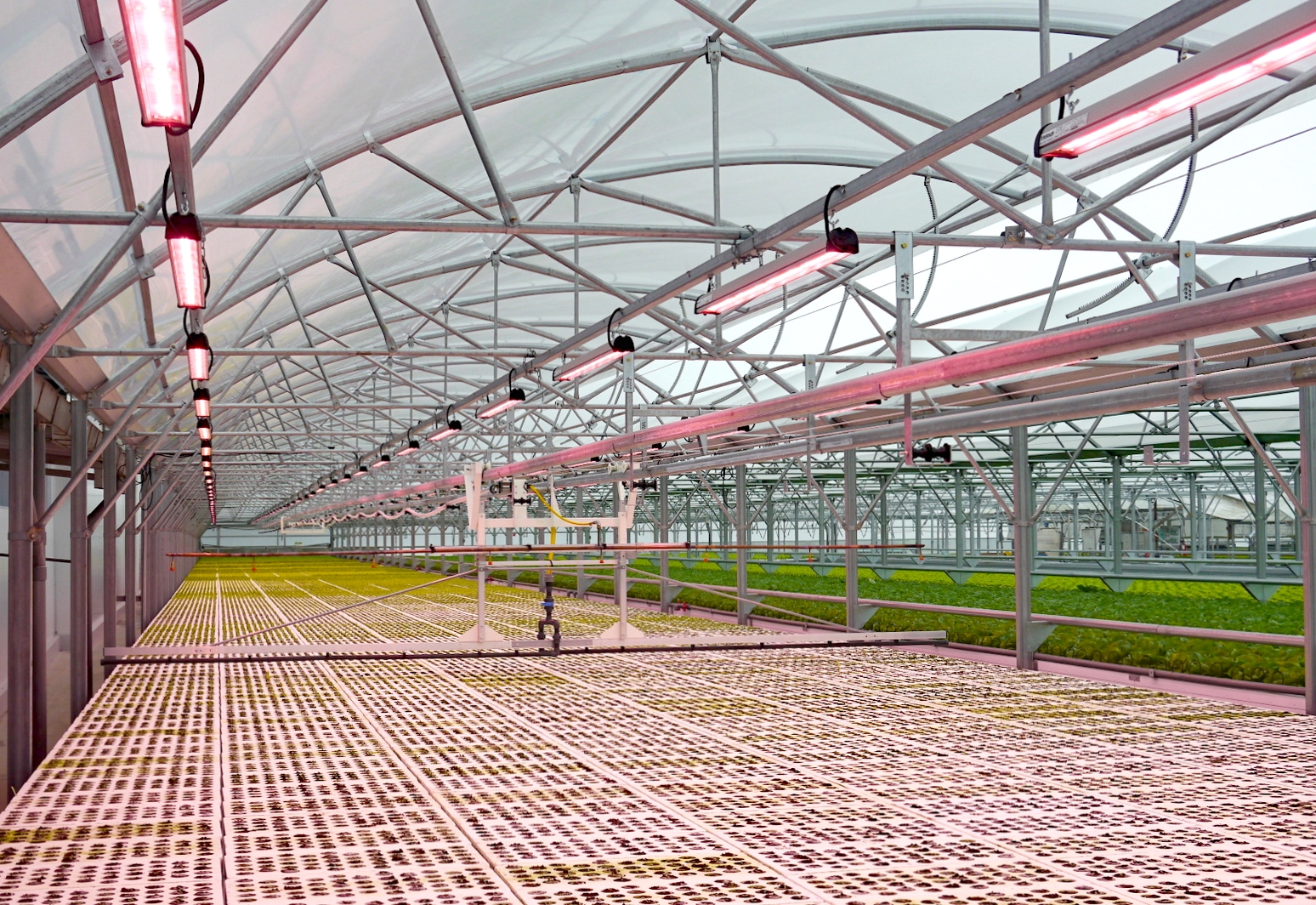


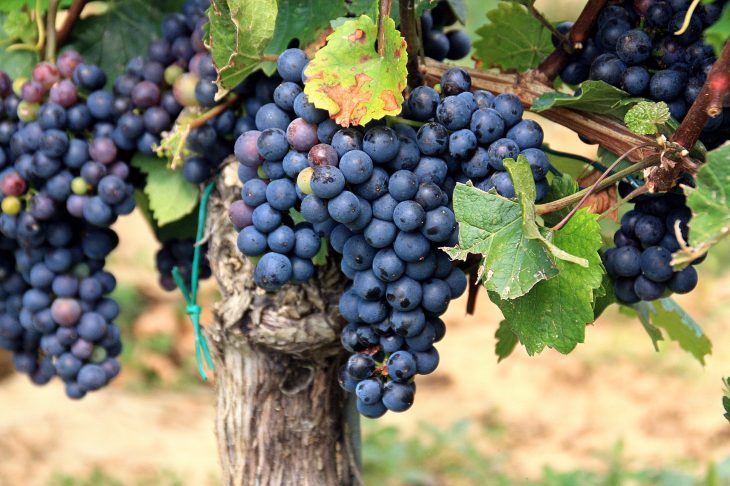
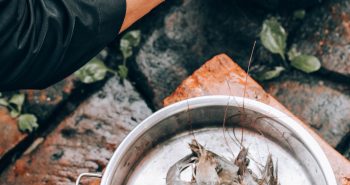


Hi,I want information about grape greenhouses please.
I want to know more about greenhouse for grapevine